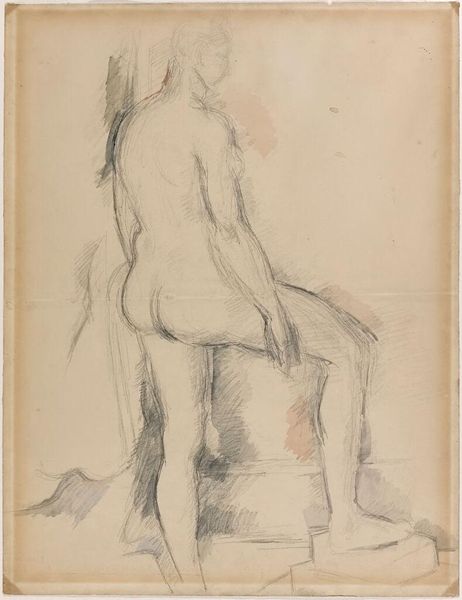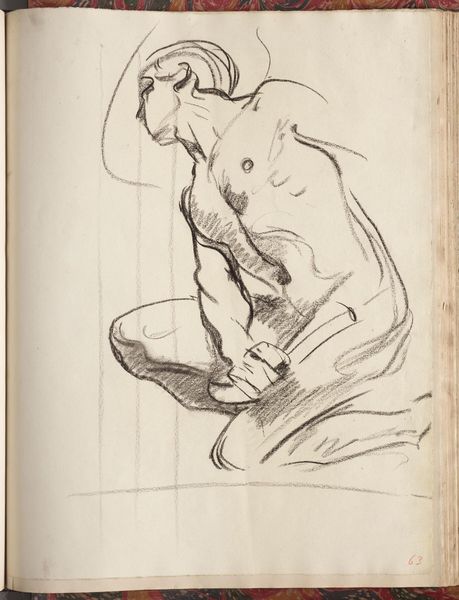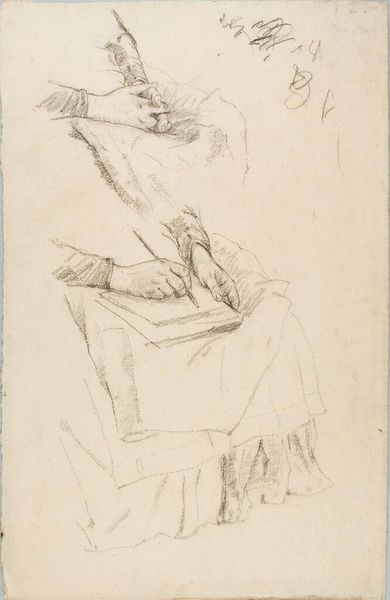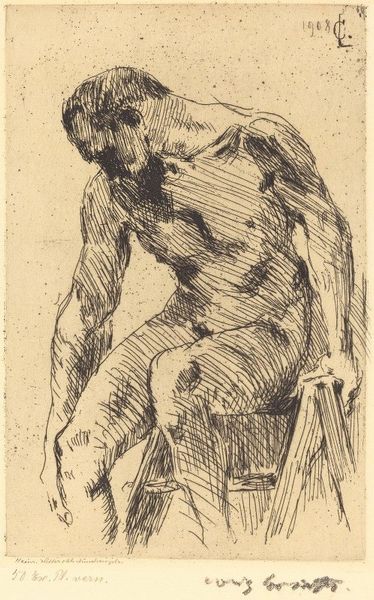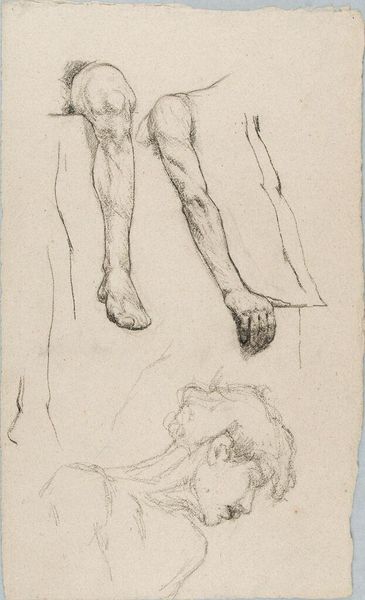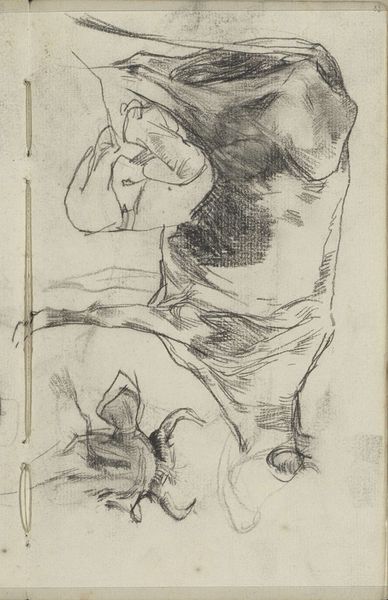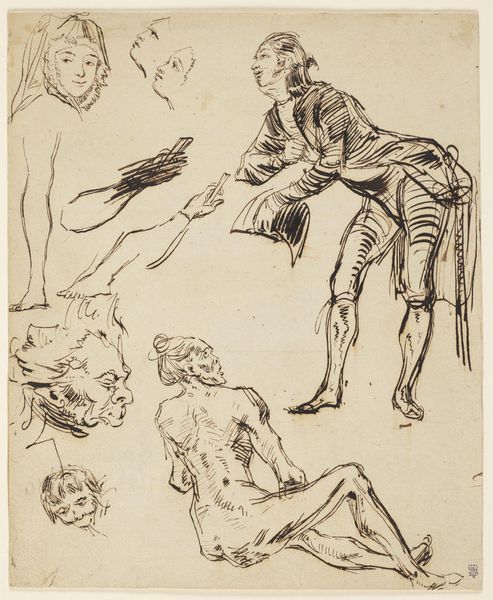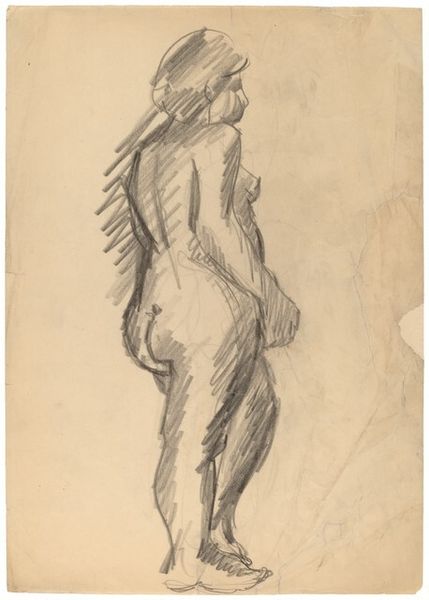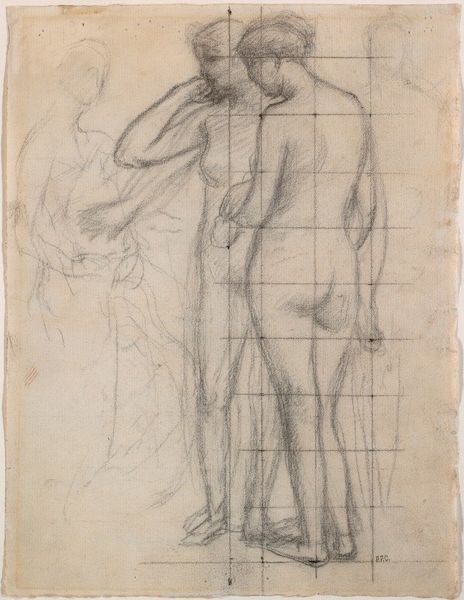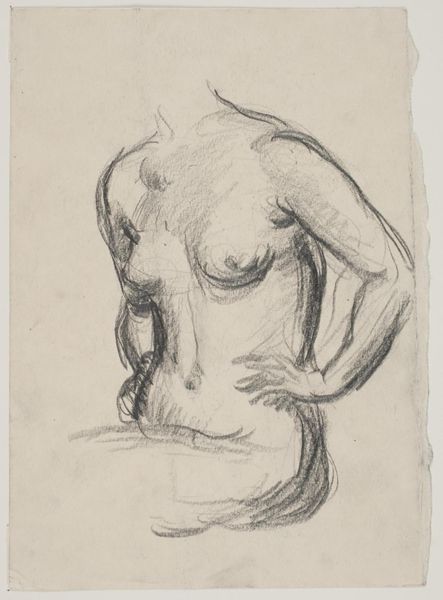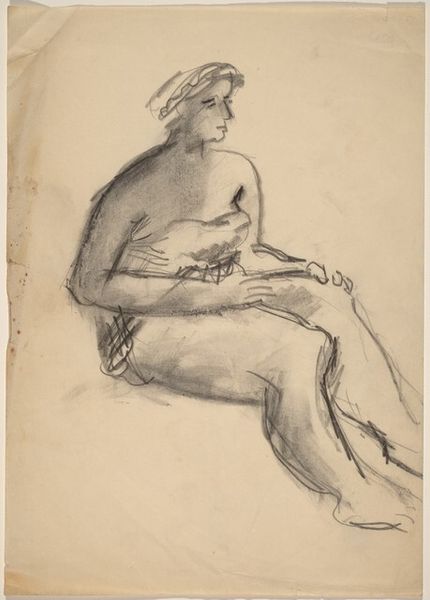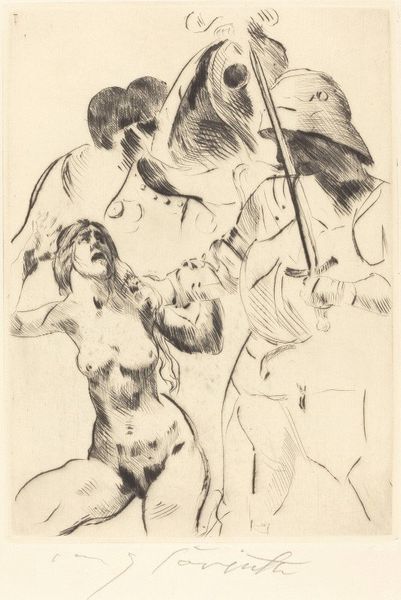
drawing, print, ink
#
drawing
#
new-objectivity
#
ink drawing
# print
#
figuration
#
ink
#
expressionism
#
portrait drawing
Dimensions: plate: 16.9 x 12 cm (6 5/8 x 4 3/4 in.) sheet: 27.94 × 17.94 cm (11 × 7 1/16 in.)
Copyright: National Gallery of Art: CC0 1.0
Editor: This ink drawing, titled "The Spider" or "Die Spinne," was created in 1914 by George Grosz. It's striking—almost unsettling—with its angular lines and stark depiction of the figure. What compositional elements stand out to you? Curator: Notice the figure's attenuated neck, the almost skeletal rendering of the face, and the emphatic hatching that models form. Grosz here departs from representational accuracy to convey a heightened sense of anxiety. Semiotically, one might ask how the artist uses line and form to denote inner turmoil, or existential dread, rather than mere external appearance. Editor: Existential dread? The figure looks so self-contained, almost withdrawn. Are you seeing that in the harshness of the lines and sharp angles? Curator: Precisely. Consider also how the artist eschews traditional notions of beauty or harmony, favoring instead dissonance and fragmentation. Note also the positioning of the hands—a tightly-knit cluster, pressed against the figure’s form. Does this communicate anything beyond protection? It speaks of vulnerability. Grosz masterfully distorts reality, to better capture an underlying emotional state. Editor: That's interesting. It seems that his break from the representational emphasizes, not obscures, emotional depth. Do you think the title influences how we perceive those elements? Curator: Undoubtedly. "The Spider" can suggest entrapment. Does it refer to the figure entrapped within herself or external entrapment? How can an appreciation of Expressionism assist understanding Grosz's strategy of employing shock or emotional intensity? Editor: This has given me so much to think about regarding how an artist's technique reflects emotion. I see that an almost chaotic composition can achieve something very powerful. Curator: And this drawing gives primacy to affect rather than pure aesthetic experience, providing, perhaps, greater resonance in an uneasy world.
Comments
No comments
Be the first to comment and join the conversation on the ultimate creative platform.
